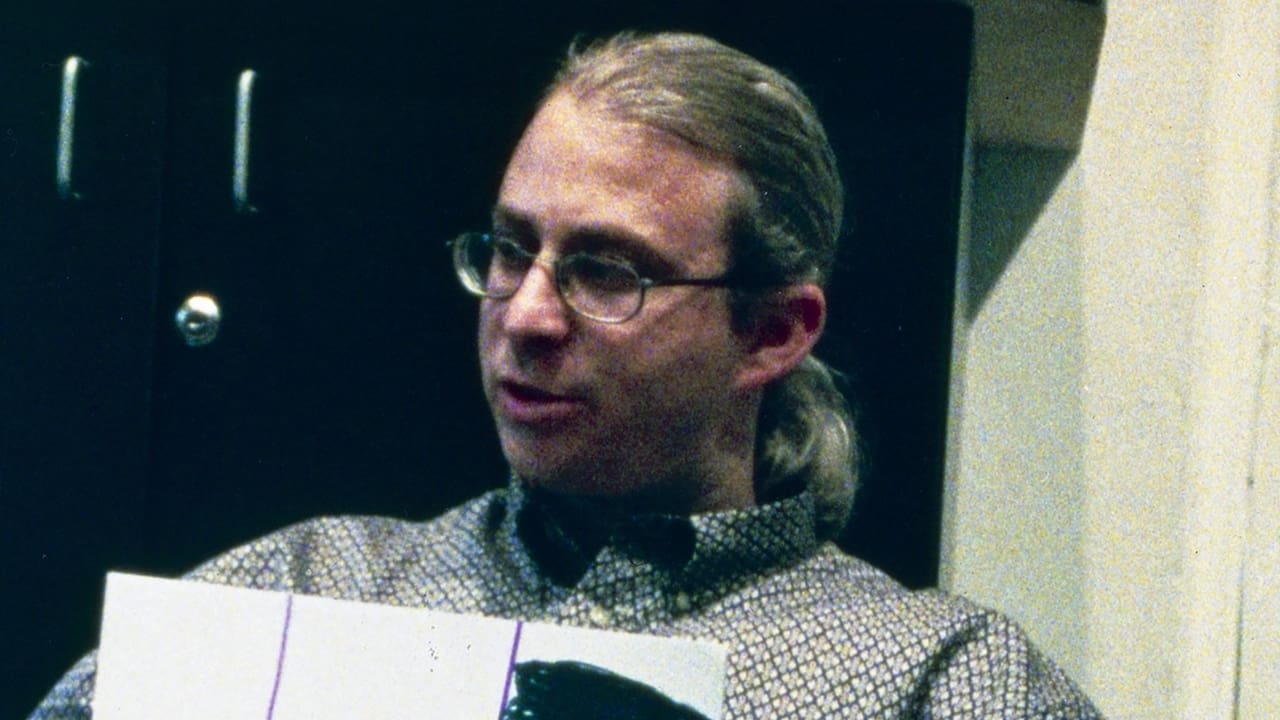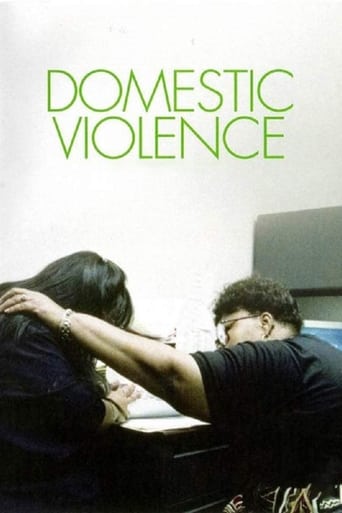

Very very predictable, including the post credit scene !!!
... View MoreWhile it doesn't offer any answers, it both thrills and makes you think.
... View MoreIt is interesting even when nothing much happens, which is for most of its 3-hour running time. Read full review
... View MoreA film of deceptively outspoken contemporary relevance, this is cinema at its most alert, alarming and alive.
... View MoreDocumentarian Frederick Wiseman, who is often credited for his "observational" style of documentary filmmaking that also caters to the style of "cinéma vérité," has made the bulk of his five-decade long career as a filmmaker about exploring institutions that are not fundamentally meeting the needs of those who rely on them. He has focused on a mental hospital that shames and instigates rather than consoles and heals, public housing projects that neglect rather than supply, and several others, in addition to profiling the every-day events at local hospitals and those who serve the mentally handicapped.With Domestic Violence, he unsurprisingly makes another masterful documentary, but this time, one that focuses on the empathy and the competence of an institution rather than its deep-rooted problems. We are taken inside The Spring, a Florida shelter for battered women and children. The Spring has been working around the clock to provide women with a home, meals, and opportunities for employment and their children with opportunities to learn, play, and rest easy at night after being taken out of their homes where violence often ensues. For one-hundred and ninety-six minutes, Wiseman intimately focuses on several different women, children, and the social workers employed at The Spring.We begin by seeing some exterior shots of Florida, before following police on several different domestic abuse calls to different places of residency, all of which bring up The Spring and its benefits to women who have been exposed to needless cruelty. One of the most heartwrenching scenes of the entire film comes early on, as we see a woman soaked in her own blood after being punched so hard in the face, her teeth have cut the better half of her mouth. It isn't until the woman begins to regain some awareness that she realizes her shoulder is in extreme pain, as she wails in agony from being lifted on a gurney and taken inside an ambulance. Such an image can never be forgotten, like much of Wiseman's film, and such real, haunting images have likely never been committed to film quite like that.After about twenty minutes of that, we are taken inside The Spring, where we will spend the next three hours of the film, watching social workers patiently extract information from female victims of domestic violence, some of whom are quiet, some are entirely cooperative, others can barely contain their emotions to illustrate what their problems are. We sit in like another patient on numerous lectures on domestic violence, roundtable discussions between staff, and meetings with the women, who we see grow more confident towards the end of the documentary and more aware of why domestic abuse, physically and sexually, occurs in the home. Wiseman structures the documentary sort of like how a patient would experience these events in real life. It begins with a house-call, it is remedied by numerous lectures and a meticulous healing process, before having the entire experience concluded by finding a job and a place of employment.Wiseman doesn't neglect footage of the additional victims to domestic abuse, which are children, often young, some born with disabilities because of abuse from the male party while their mother was pregnant. We see kids sit in classrooms, trying to learn, with the youngest children drawing pictures of their worst memory they can think of that ever occurred in their home. One child apparently draws a picture of him and his sister being beaten bloody by an extension cord, while another draws a picture of her parents arguing over bills while storm clouds rain flowers over their head, providing a glimmering of hope in an ugly, senseless situation. Stuff like this is stranger, much more affecting than fiction.Women are put in so many tight places when abused that their best option doesn't even seem like enough, which is obtaining an injunction against the abusing party, which acts as a restraining order. Even then, the women just want to find some solace, but thankfully, due to the competence and tireless work of numerous social workers, many of whom have perhaps been through this ordeal before, they have found a temporary home. A staff-orchestrated tour of The Spring for elderly women provides all one needs to know about The Spring in about ten minutes. It goes through how people obtain admission into The Spring, the people they deal with, and the process that usually unfolds after the police are called to handle a domestic violence situation. A rough description of one of the many hardships an abused woman must face, the staff worker tells the group of ladies, is gathering her belongings in the limited time of about five minutes. What does she take? Wedding albums? Photos? You need to grab your important documents and multiple forms of identification, but don't forget your bank-book and your check register. What if you have kids? They need vitamins, clothes, maybe some stuffed animals, and their own items. Do you bring food? Do you bring multiple pairs of different clothing? How long are you going to stay there? Where did I leave that extra money? So many questions and the clock keeps ticking.Frederick Wiseman's Domestic Violence is one of the scariest films I've seen all year, and it's not even a horror film. It's probably the worst kind of film for a topic about this - a documentary. It's a factual account of the terrifying, abusive situations women are put through with no justification whatsoever. There is light at the end of the tunnel, however. Through numerous scenes depicting empathetic relief and true understanding, Wiseman quietly hints that those in The Spring are getting the help they need and deserve and that with more awareness in the way of domestic violence, people are seeking outlets to cope. Like the social worker explains on the tour, "this is where the violence stops and the healing begins." Directed by: Frederick Wiseman.
... View MoreThe 3hr 16min film opens with a police car cruising through the streets, arriving at a domestic disturbance and arresting a man who claims innocence. It goes on after this to show a mixture of arrests and questioning in households which have reported domestic disturbance. A large part of this important documentary also consists of women in group sessions and discussion with counselors in a shelter for battered victims. Bruised and angry women (many of whom have small children) recount their horrific pasts of sexual, emotional and physical control. Interestingly enough, the main reason the women gave for eventually leaving the batterer (usually a husband or boyfriend) and coming to the refuge for help, was not to protect themselves, but to protect their children.The most positive thing about the film was how the victims eyes were opened to their own self-worth at the refuge. A lot of the women reported that they didn't even realize that what their partners were doing was wrong, and if they did, they forgave them and let them do it again and again. There is a tragic scene early in the film where are blood-soaked woman whose teeth have been punched through her cheek screams for the paramedics not to take her away.Statistics showed that 650 adults and one thousand children arrive at the shelter annually. 50% of these children have been abused prior to admission and 50% of which are under 5yrs old. 15% of batterers are women and about 12 men each year go to the refuge for help. Domestic violence crimes take up a third of all police time, (Tampa, Florida).Each different story/clip is separated by drab images of six-lane traffic and the desolate buildings of the shelter, I don't think the sun was shown once.Domestic Violence is an excellent reminder of the cruelty a large proportion of the population still has to live with from day to day and and cyclic nature of family abuse. Despite the depressive nature of the material, it is both real and hope-giving.
... View MoreIf you are familiar with Wiseman you know what to expect. I found myselffascinated by all 196 minutes of this film. Two or three times during the film we see a tour group of elderly women who are visiting the battered women'sshelter/rehabilitation center/school where the majority of the film takes place. These old women are spectators in this bizarre and frightening world just as we are. The expressions on their faces - the various ohs and oohs, the cowls, the frowns and the nods of supposed understanding - mimic those of the audience.The old women are helpless tourists who wonder exactly what it is they can do to help, and the task seems so overwhelming that they're left to sit at a board room table and sip iced tea. Wiseman's observational camera is the perfectmedium with which to view domestic violence, a problem that has probablyalways existed and will continue to exist as long as we do. Here is, in three hours and sixteen minutes, its document. A multi-angled and wholly satisfying portrayal. Highly recommended.
... View MoreDomestic Violence was a documentary feature entry in the most recent Chicago International Film Festival. The director had his camera witness things as they were going along. There are no interviews and no recreations. The subjects of the documentary were abused women who are welcomed into a shelter in Florida, and we are introduced to them through the registry process, assignment of housing and counseling sessions, as well as the generous staff who run the shelter and provide comfort. To watch these survivors pick themselves up and try to go forward with their lives, especially those who have children, is dramatic, and hopeful, and heartbreaking. All audience members will have specific dialogue bits reach them personally, whatever they may be, especially audience members who had experienced mental, emotional or physical abuse. Ideas take up entire scenes, but one or two simple sentences uttered by the film's participants can become so profound to the viewer. Documentary films can be just as powerful, dramatic, shocking, inspired, educational and even entertaining as their fictional counterparts, and "Domestic Violence" provides the viewer with an emotional roller coaster. The director has shown that the effects of abuse on other people, especially those that so loved their abusers, can have far-reaching effects (the abused finally leave their abusers, fine, but they are far from done with what has happened). This is an excellent documentary film that deserves to be seen.
... View More